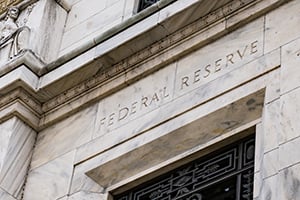 The most recent news bomb taking markets down was the release of the minutes from last month’s meeting of the Fed. The Fed raised rates, as was amply reported. In the following press conference, Fed Chair Jerome Powell was widely reported to be more hawkish, which is to say, likely to raise rates further. But what we did not know until yesterday was just how emphatic the decision was for the entire committee.
The most recent news bomb taking markets down was the release of the minutes from last month’s meeting of the Fed. The Fed raised rates, as was amply reported. In the following press conference, Fed Chair Jerome Powell was widely reported to be more hawkish, which is to say, likely to raise rates further. But what we did not know until yesterday was just how emphatic the decision was for the entire committee.
No Doves Here
Reading the minutes, it was not just Powell being hawkish. It was the entire committee, including those who were previously thought of as doves. What the minutes told us was further emphasized with some recent public comments from one of the erstwhile doves, Lael Brainard. At the end of the day, there are no doves anymore.
That means the financial world looks very different than it did last week. So, let’s look at those differences and what they mean for us as investors.
Fed All In on Higher Rates
The shortest answer here is higher interest rates, but we knew that. The real takeaway from the meeting notes was that we will be going higher, and faster, than expected. Many of the participants at the meeting would have preferred to raise rates twice as much as they did, half a point rather than a quarter point, and they only held off because of the uncertainties around the Russian invasion of Ukraine. Many of the participants also expect that one or more half-point hikes are coming this year. In total, markets are now expecting about 2.5 percentage points of rate increases this year—the largest annual increase since 1994. The Fed is now all in on higher rates and wants to do it quickly.
And it is not just the short-term rates. Even as the Fed raised rates in the last meeting, it kept buying bonds in order to push longer-term rates down. That dissonance will be disappearing, as the Fed now plans to shrink the balance sheet by almost $100 billion per month. The buying pushed longer-term rates down, and the runoff can reasonably be expected to raise them. Under the expected new policies, both the short- and long-term ends of the curve will be pushed up—and there really won’t be anywhere to hide. Which brings us to the impact on us as investors.
The Real Economy
There are two pieces here. First, in the real economy, interest rates are up as well. The biggest impact for most people is the increase in loan rates, with mortgage rates now over 5 percent for 30-year fixed loans. This has only just started to hit the housing market, but the impact will only get worse over time, and homebuilding stocks have dropped as affordability has pulled back sharply. Higher rates will also affect other large purchases, including car loans, business equipment, and anything that needs a loan. This will be a slowly growing headwind as purchases already arranged clear and are not replaced.
The Financial Economy
Beyond the hit to the real economy, we are also seeing the impact on the financial economy. Bonds have pulled back more this year than in decades. Stocks have pulled back as higher rates erode the present value of the future earnings—and as the real economy impact raises the direct risks to those earnings as well. The damage is real and may well get worse.
With interest rates now at the levels we saw before the pandemic, in 2019, the financial environment is likely to increasingly resemble what we saw then. Housing demand is likely to pull back to 2019 levels, or even lower as prices are now higher. Stock valuations are likely to drop back to 2019 levels, creating a headwind even as earnings continue to improve. The economy, both real and financial, is moving from having a Fed tailwind to a Fed headwind—and that is a big change.
A saying you often hear in markets is, “Don’t fight the Fed.” The Fed has been largely absent from the ring recently, even as employment and growth accelerated, and inflation popped. The message of the minutes is that the Fed is back—and determined to knock out inflation. As investors, we want to make sure we are not taking those punches as well.
Will This Derail the Recovery?
At some point, this will very likely derail the recovery, but not immediately. The economy still has substantial momentum, and the labor market is stronger than it has been in decades. That strength is what is allowing the Fed to raise rates like this. We are not looking at a recession anytime soon, and markets should benefit from that continued growth. At the same time, that headwind will eventually slow us down. As always, the answer is to be watchful but don’t panic.
That is the real message here: things are changing—pay attention.


 Print
Print

